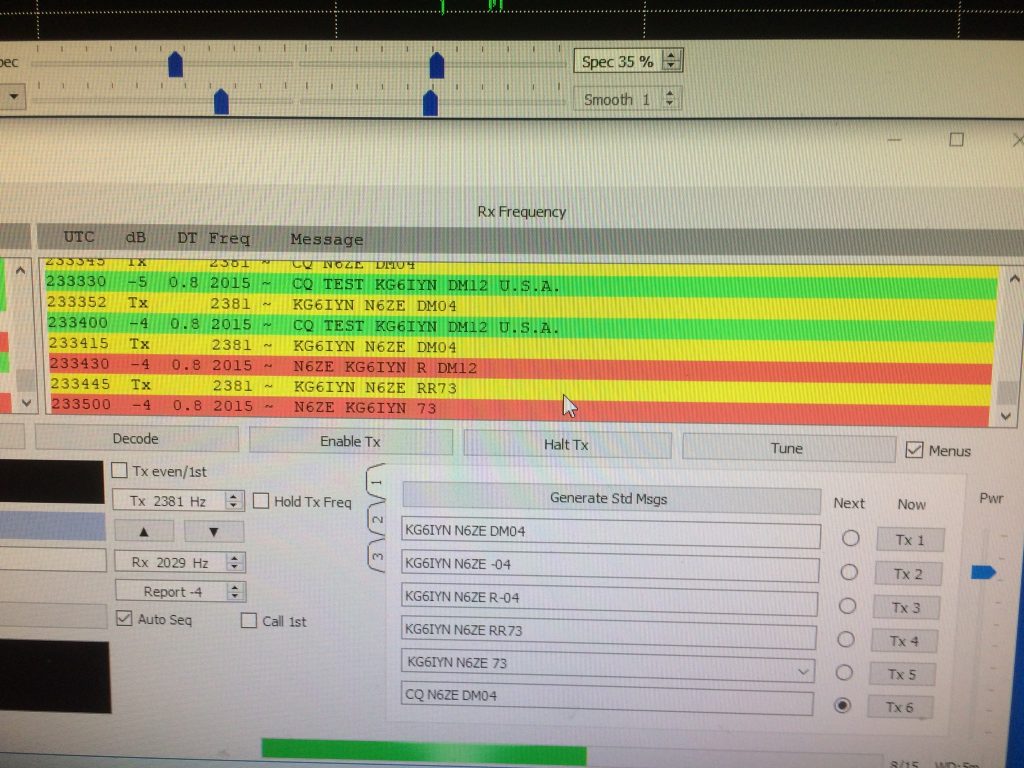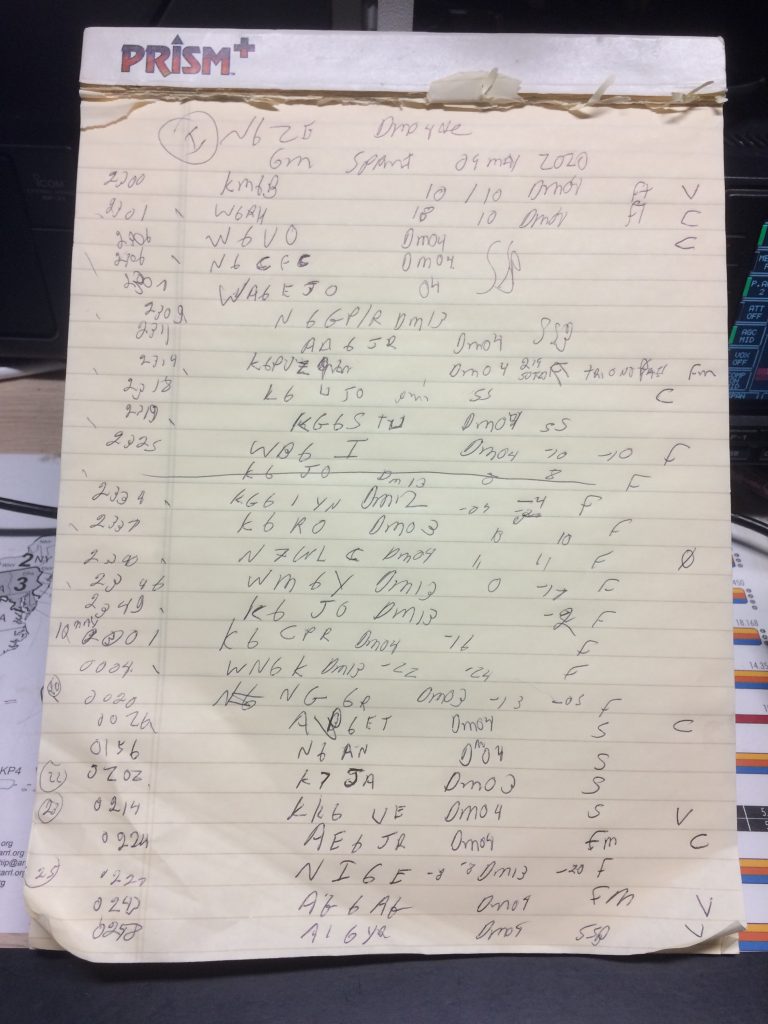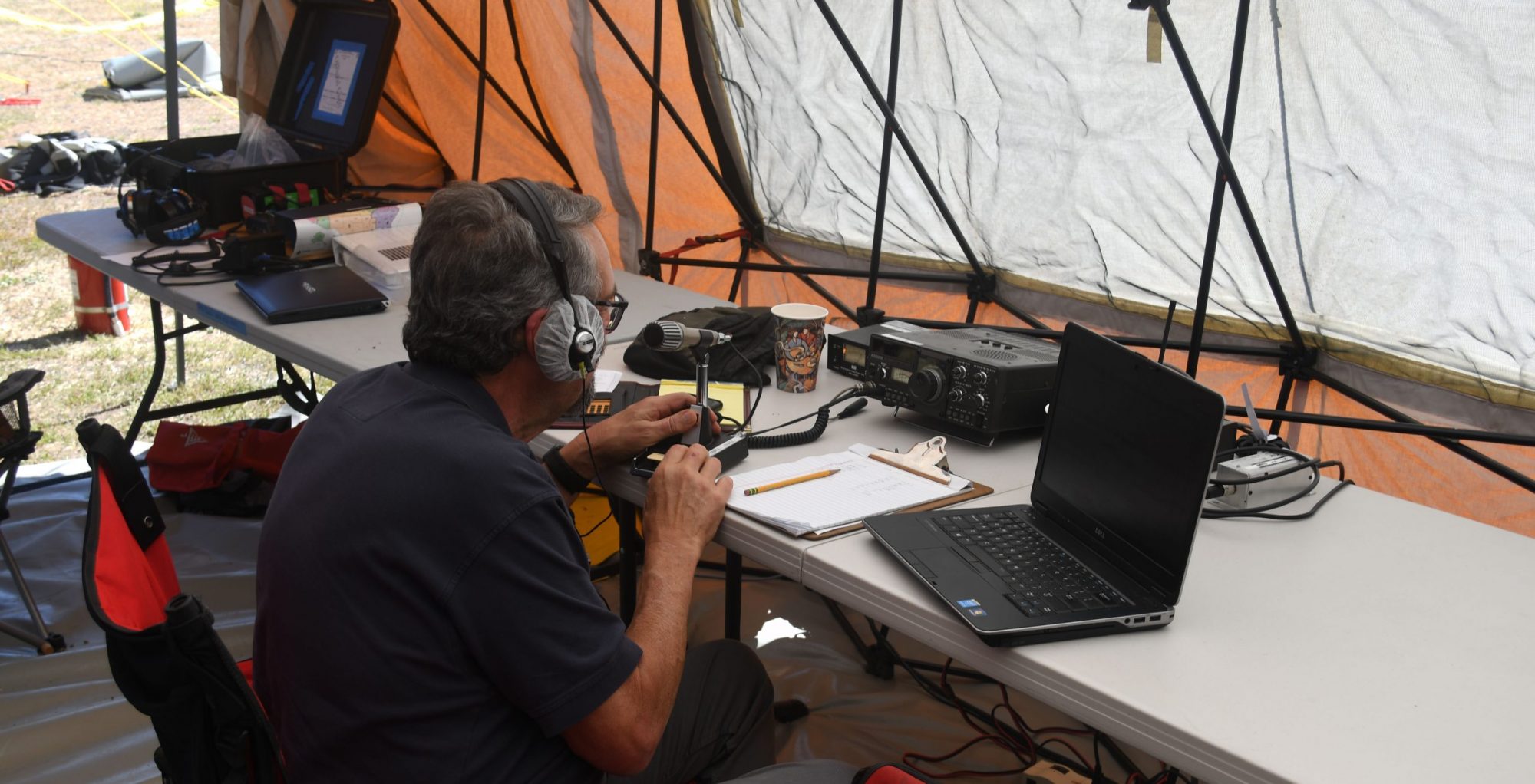
By Pete Heins-N6ZE
The 2020 Spring Six Meter SPRINT, the final one until fall 2020, was held on Saturday, May 9, 2020, and what a SPRINT it was:
- Lots of Ventura County stations were active.
- Many hams with little prior 6-meter experience tried the band.
- Not a bit of Sporadic E (Es) Propagation was to be had.
- One CVARC member activated a Summits on the Air (SOTA) Peak.

Although some parts of the country had “Sporadic E” (Es) propagation conditions, with resulting contacts made at distances from 400 to 2500 miles, California was not treated to any great conditions. Most Ventura County operators were able to eek out contacts from south of the Santa Monica Mountain range in Grids DM03 and DM13 and a lucky few using FT-8 were able to hook up with KG6IYN (DM12) in San Diego.
About 6 hours before the SPRINT began, there was some Es propagation to the Pacific Northwest. As this is being written on Sunday (5/10) afternoon, 6-meters is now open to parts of the Pacific Northwest and Colorado/Kansas. Reflections from the “E” ionospheric layer do occur sporadically, hence the name “Sporadic E”. Es propagation will typically be noted on the 6-meter band, and very rarely on 2 meters, about 3 or 4 days per week until August.

The 6-Meter SPRINT, at least from N6ZE’s Thousand Oaks and Ventura County viewpoint produced some interesting data. 3.5 hours of operating during the 4-hour event, netted 27 contacts made in Grids DM03, DM04, DM12, & DM13. Best DX was KG6IYN (DM12) in San Diego over a mostly over water path of about 135 miles. Approximately eight members of the Conejo Valley Amateur Radio Club (CVARC), four members of the Ventura County Amateur Radio Society (VCARS) and one member of Ventura County Amateur Radio Club (VCARC) were heard.
A few also belonged to the Pacific Northwest VHF Society (PNWVHFS). SSB and FT-8 contacts were evenly split with a dozen apiece. Three contacts were accomplished on 52.525 MHz FM Simplex. They included SOTA Operator Paul Van Zuyle-K6PVZ; Will Newman-AE6JR, using a Yaesu VX5-R handheld with tiny whip antenna and Stu Sheldon-AG6AG, who was operating from his home station. Note: AE6JR and N6ZE were located about 3 miles apart. K6PVZ, a CVARC member, activated his first SOTA peak W6/SC-219, near Triunfo Pass. He operated on 6-meter FM/SSB with a Yaesu FT857 and 66 ft end-fed wire to collect 10 QSOs in 4 Grids.
6-meter equipment used by N6ZE included an ICOM-756 Pro-II (up to 100 watts) for USB, FM, and FT-8, a SignaLink integrated sound card for computer-transceiver interface and an M>2 five element yagi at about 12 feet above ground level.
The five seasonal SPRINT events, sponsored by the Central States VHF Society, are held in the spring and fall to encourage use of and foster simplex activity on the VHF/UHF bands. See you “on the air” during the ARRL’s June VHF Contest on June 13 and 14!
Bt73
Pete Heins-N6ZE
